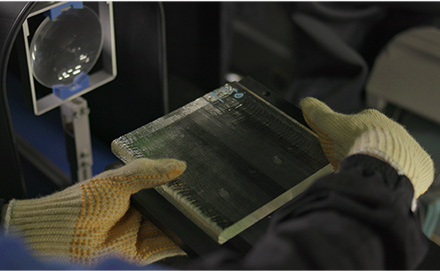Production Process
In an effort to satisfy the needs of our customers, we fully exert our technical strengths in every process, including in raw material design, property design, melting, processing and shipment, to deliver reliable products to the world.






